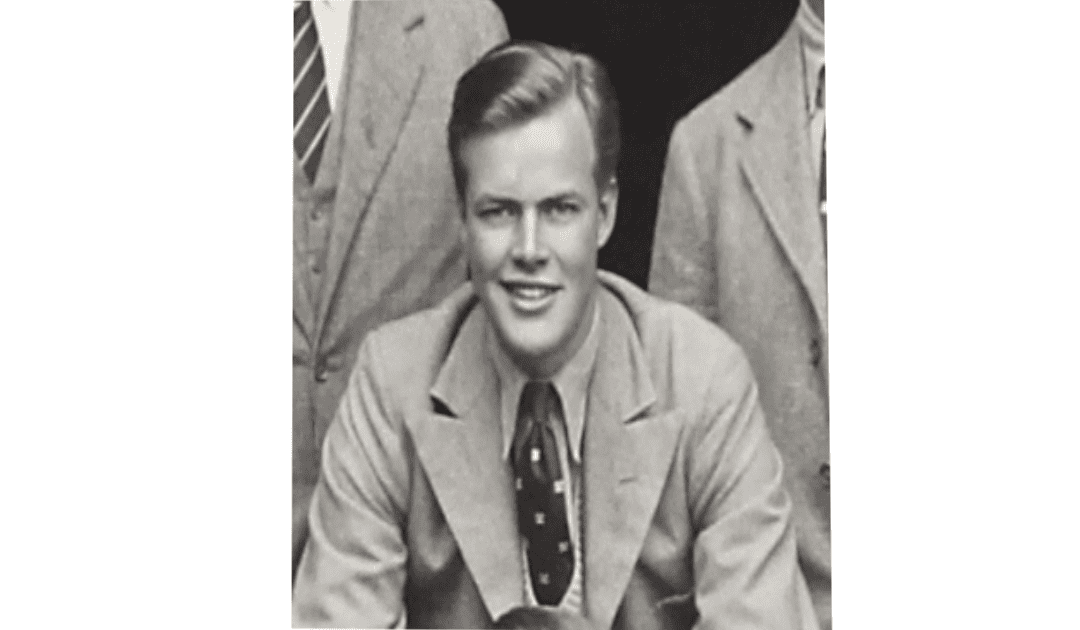Richard Hillary was born on the 20th of April 1919. My favourite book is “The Last Enemy”, which he wrote after being shot down and badly burnt in his Spitfire, during the Battle of Britain. It was also Adolf Hitler’s birthday, but I’d rather write about Hillary.
He was born in Sydney, Australia, the son of an Australian diplomat. Hillary later moved to the United Kingdom, where he was educated at Shrewsbury School and Trinity College, Oxford. His life is a testament to the indomitable spirit of the young men who fought in the skies during World War II.
Hillary’s journey into the Royal Air Force began as a member of the Oxford University Air Squadron when tensions in Europe were escalating towards war. By the outbreak of World War II, he was a pilot officer in the Royal Air Force Volunteer Reserve.
Richard Hillary is best known for his role as a fighter pilot in the Battle of Britain. This historic conflict, spanning from July to October 1940, saw the RAF defending the United Kingdom against large-scale attacks by Nazi Germany’s air force, the Luftwaffe. The Battle of Britain was a pivotal point in the war, and young pilots like Hillary were at the forefront, risking their lives to protect their country.
Hillary’s flying career, however, was tragically cut short. On September 3, 1940, during a dogfight over the Kent coast, his Spitfire was hit by enemy fire, forcing him to bail out. He suffered severe burns to his face and hands, injuries which drastically altered the course of his life. He was treated at the Queen Victoria Hospital in East Grinstead, where he became one of the first patients of pioneering plastic surgeon Archibald McIndoe. This group of patients would later be known as the “Guinea Pig Club“, a testament to the experimental nature of the treatments they underwent.
Despite his injuries, Hillary’s spirit remained unbroken. While recovering, he began to pen down his experiences, resulting in his seminal work, “The Last Enemy”. This autobiographical account offers a hauntingly vivid depiction of the life of a fighter pilot during the Battle of Britain. Published in 1942, it provides an introspective look at the fear, thrill, and eventual disillusionment that came with aerial combat. Hillary’s poignant narrative and candid reflections resonated with readers, both during and after the war, ensuring his legacy as both a hero and a writer.
The Last Enemy is not merely a war memoir; it is a profound exploration of the human condition under the pressures of war. Hillary’s writing is marked by a raw honesty and philosophical depth, questioning the nature of heroism and the moral complexities faced by those in combat. His ability to articulate the psychological impact of warfare on young men is perhaps what has kept his work relevant for generations.
Tragically, Richard Hillary’s life was cut short when he died in a training accident on the 8th of January, 1943. He had, rather like Douglas Bader, badgered his way back to flying and fighting again. His aircraft, a Bristol Blenheim Mark V, crashed during a night training exercise, killing Hillary and his radio operator Wilfred Fison.
Today, Richard Hillary is remembered not only for his bravery as a pilot but also for his ability to capture the essence of war through the power of words. His life and work serve as a lasting tribute to the RAF pilots of the Battle of Britain and a reminder of the cost of war, both physically and psychologically. “The Last Enemy” remains a significant piece of literature, offering insights into the realities of war and the enduring spirit of those who lived through it, and my favourite book. “Seven Pillars of Wisdom”, by T.E. Lawrence, comes a close second.

